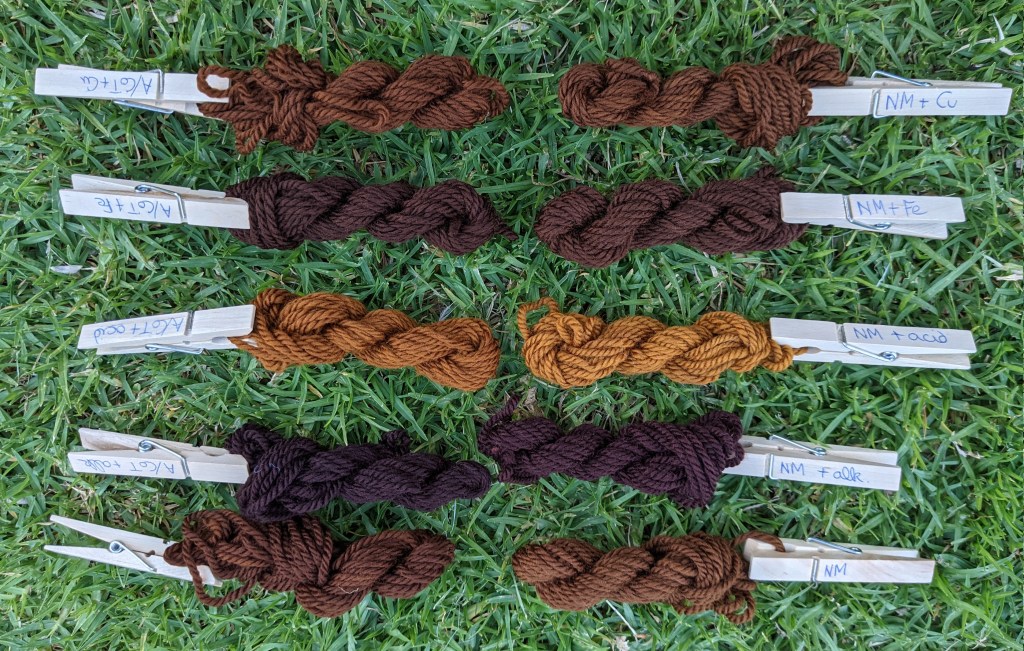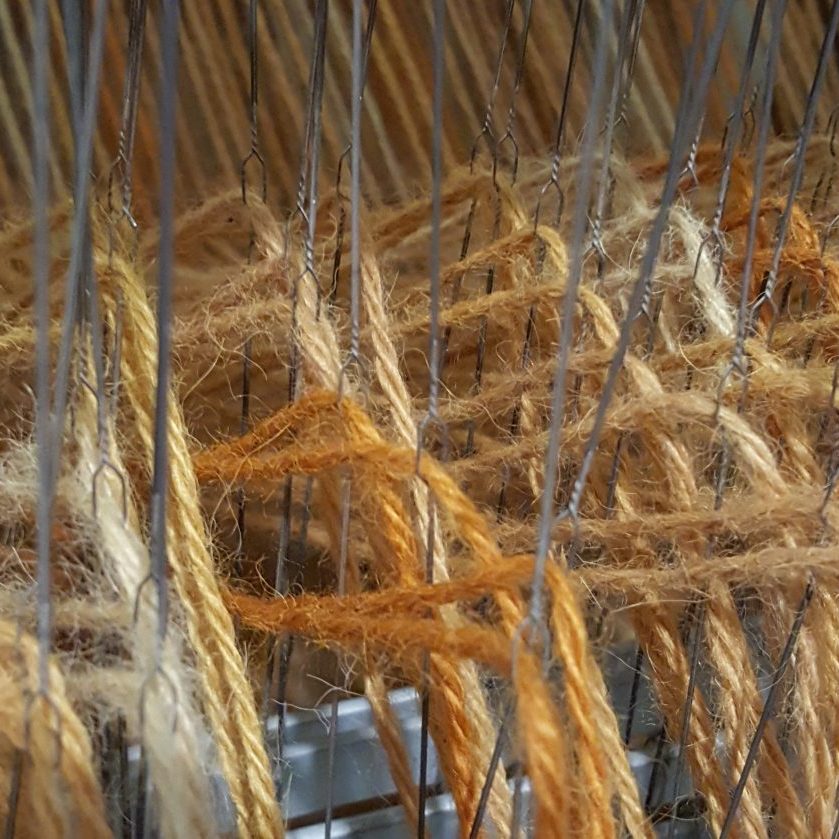Dyer’s puffball, Erbsensteinpilz
It’s not easy to find names of this one in other languages, and many of the common names are not very complimentary, referring to the appearance of the puffball when it opens and turns brown and scungy. Say no more. It appears to be rare in the British Isles, and to prefer southern Europe; with our Mediterranean climate here in South Australia it’s not difficult to find in autumn. I haven’t posted a picture as I wouldn’t want to be responsible for any unfortunate misidentification. I was always told that all fungi/toadstools are poisonous and to avoid them. Good, general safety advice for kids, but what about adventurous natural dyers? Some sources say it’s poisonous, others not, others that it “may be”. Well, I’m not going to eat it anyway, and handle it with care. Regarding the common names, ironic enough that I carried it home in a doggy bag (and not the sort you ask for in a restaurant).
I sliced a portion off one end and made several slits in it rather than cutting it into chunks. Why? To avoid any mess. The section was then simmered for about 40 minutes. The water didn’t take long to turn opaque dark brown. The chunk of fungus was then removed and the yarn dropped in. Half of the skeins immediately took on a dark brown, while the others remained pale. I didn’t bother fishing them out to find out, but just assumed that the mordanted ones were the darker.
About half-an-hour later (maybe less), the water had turned translucent dark yellow, and the skeins dark and light orange, a bit like a dahlia dyebath both before and after an alkaline mordant. This was going to be interesting…
As if those colours weren’t fascinating enough, when they came out of the dyepot there was further transformation. The non-modified skeins, when rinsed, turned shades of chestnut brown. Was this due to oxidisation?

Adding bicarb turned the next pair of skeins a deep plum brown, a colour I’ve never achieved before. Definitely one to repeat, and I’ll be scouring some more yarn later.
Vinegar turned the third pair two shades of honey brown. Like all the other skeins, the shades are deep and strong.
The iron modifier produced two shades of dark brown. And finally the copper modifier, which I’ve only just made and started using. Chestnut brown again, but brighter than the first pair.
I read that the dye is substantive, but using a mordant clearly deepened the colours. They aren’t quite as bright as this in real life, but I’m really not good at colour manipulation. Now, off to wind some more skeins for scouring…
